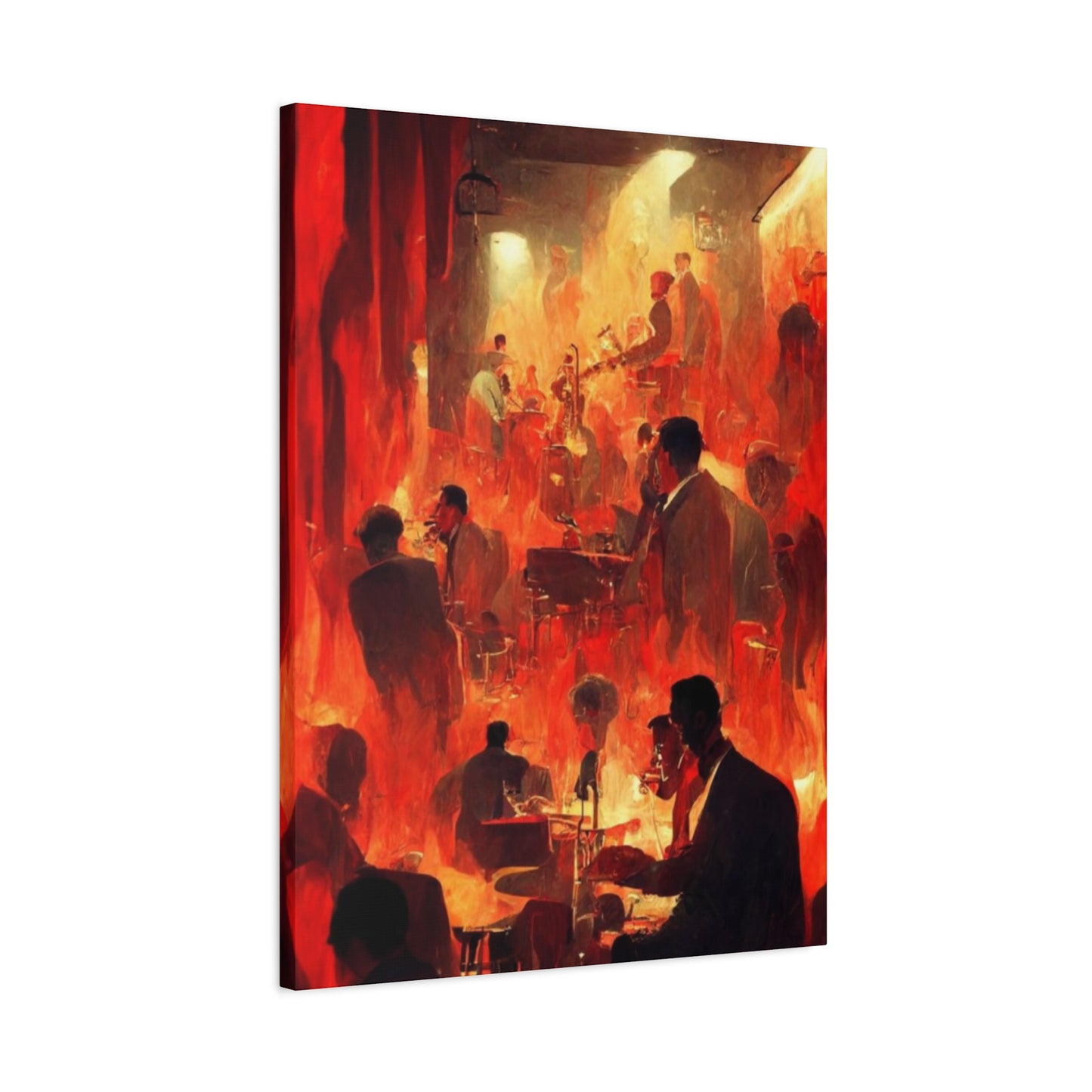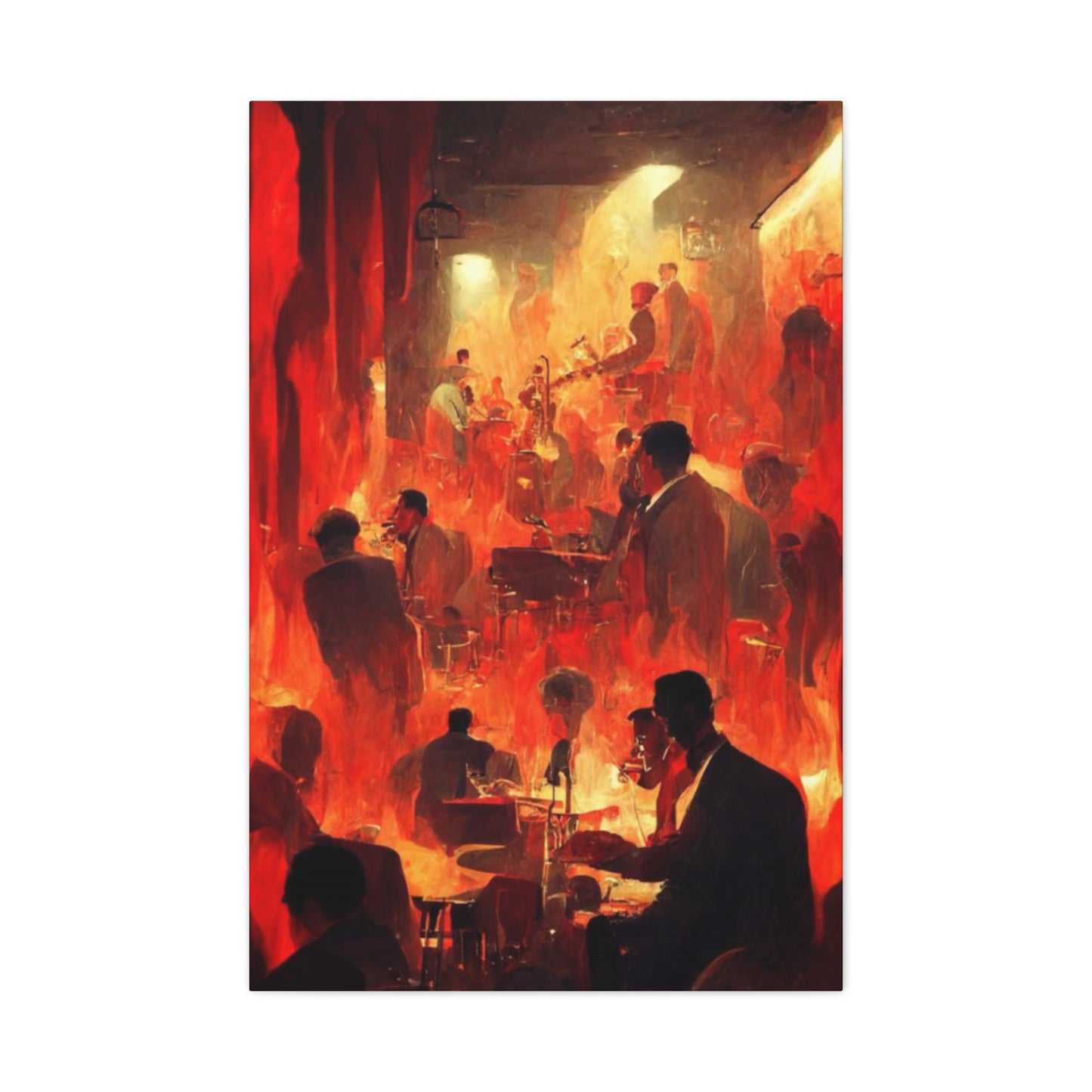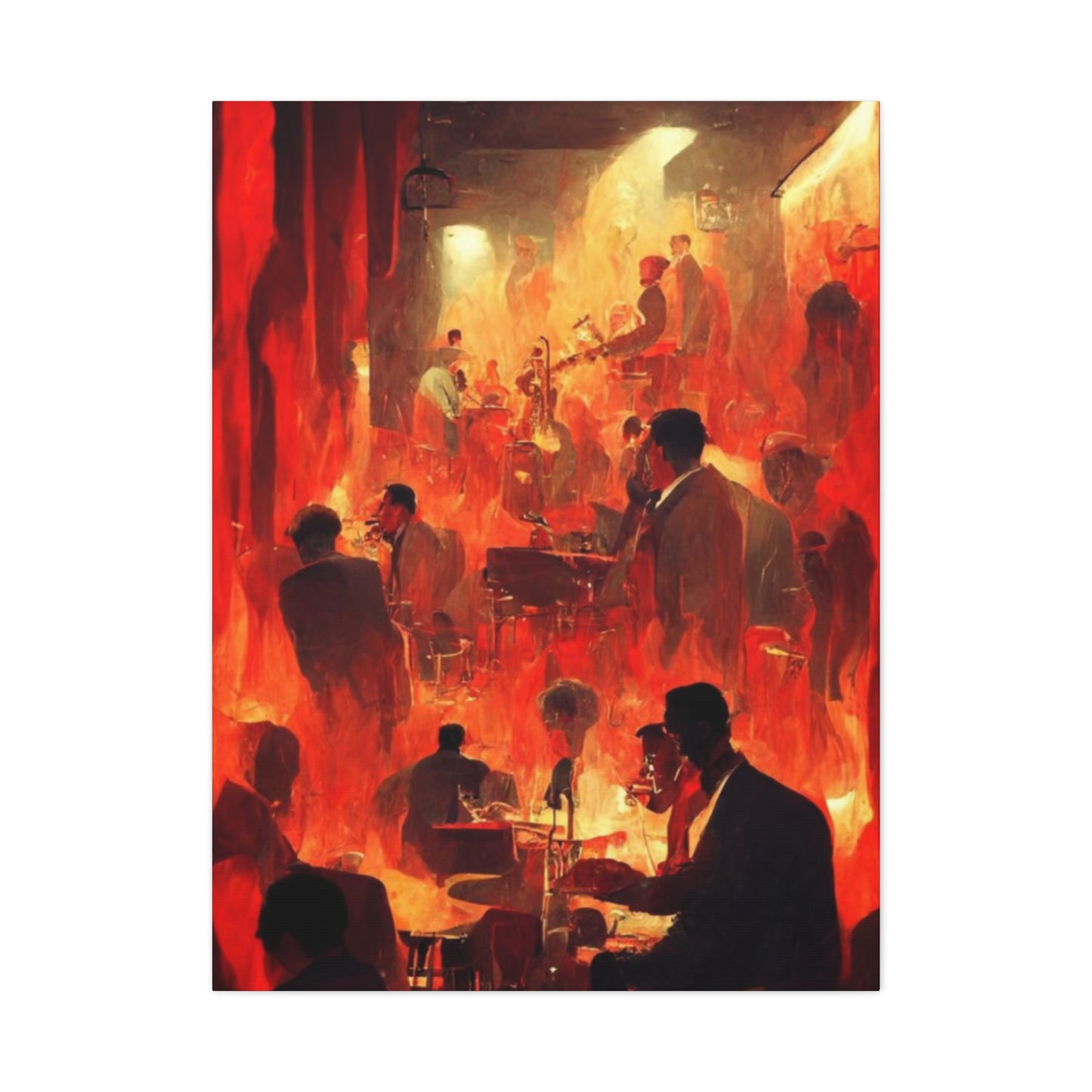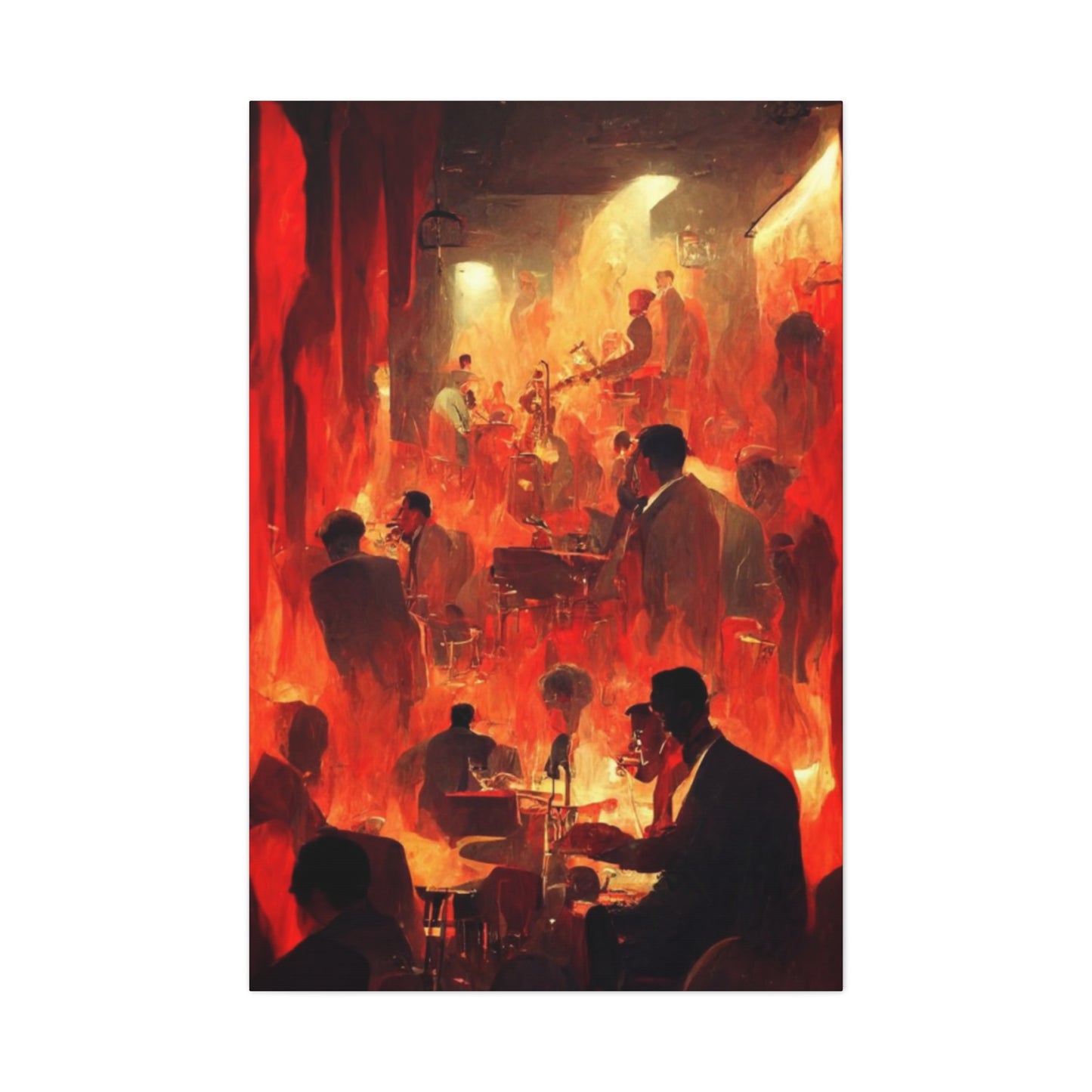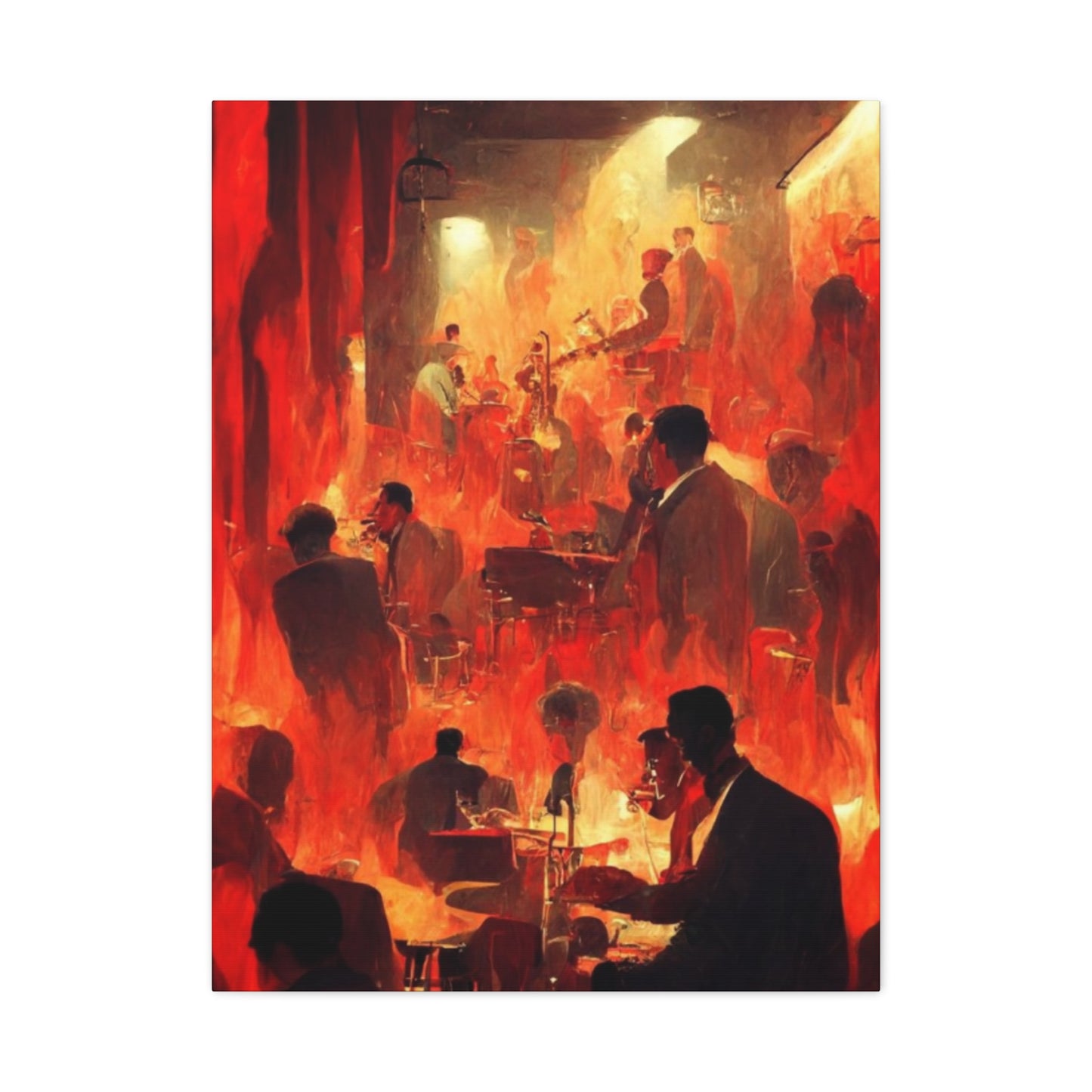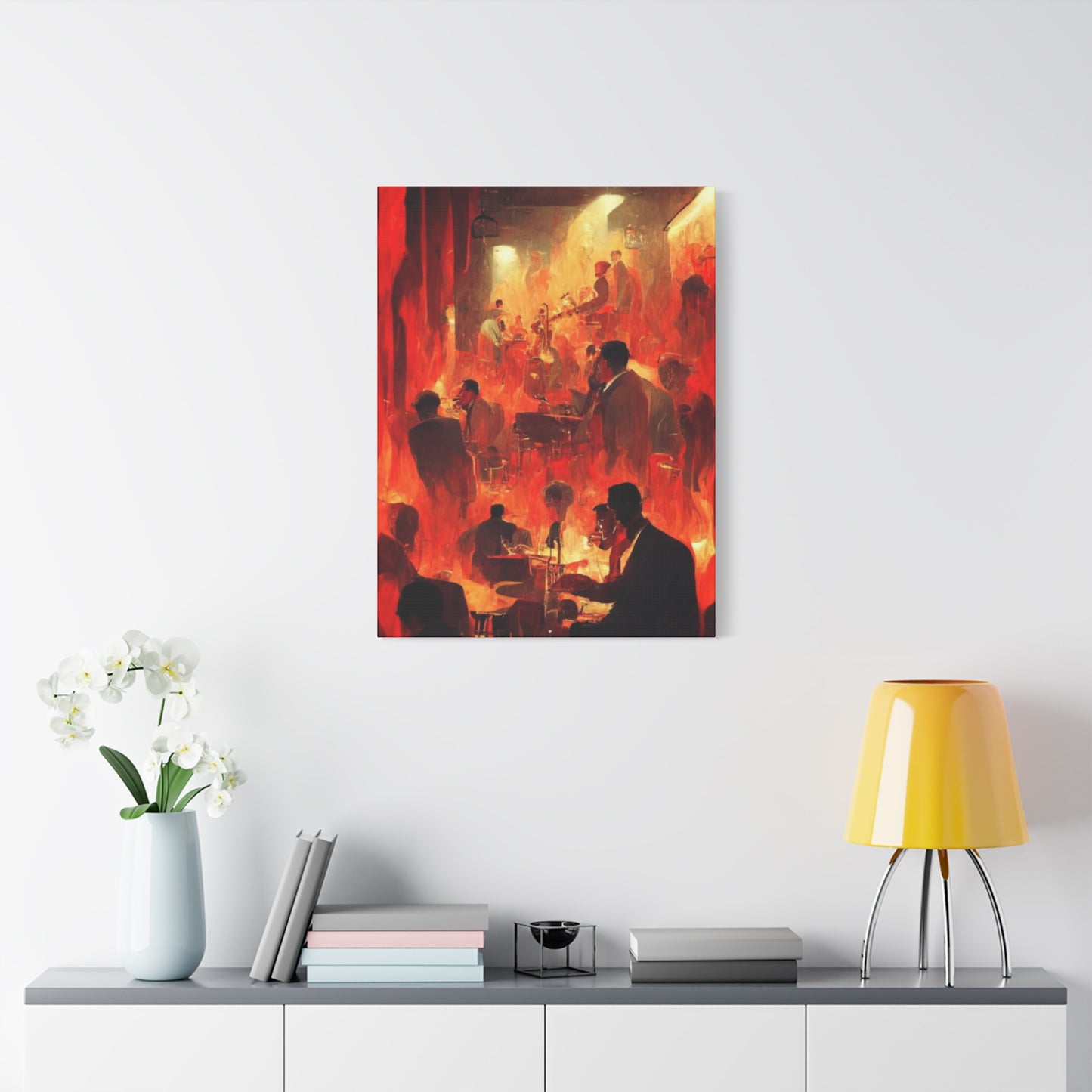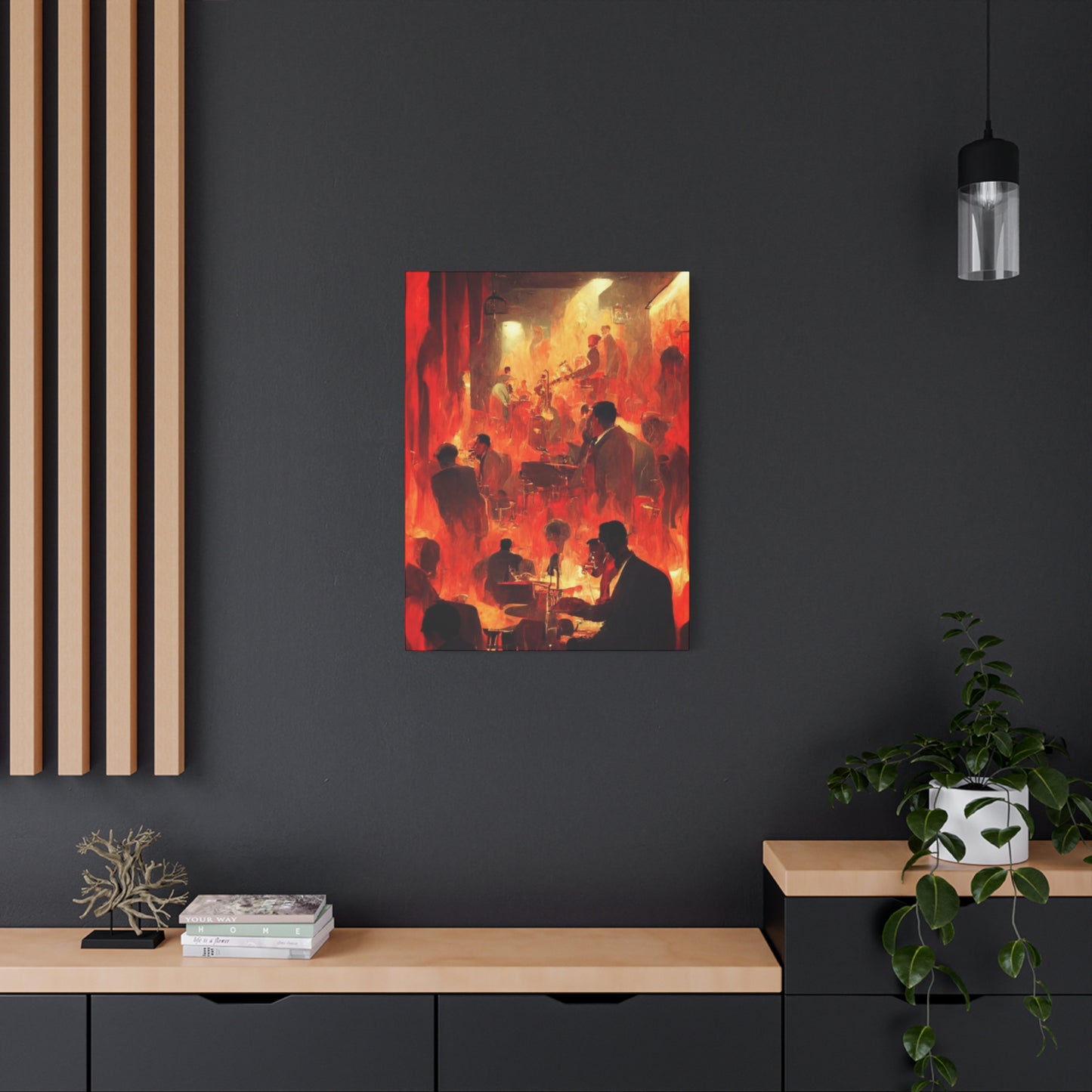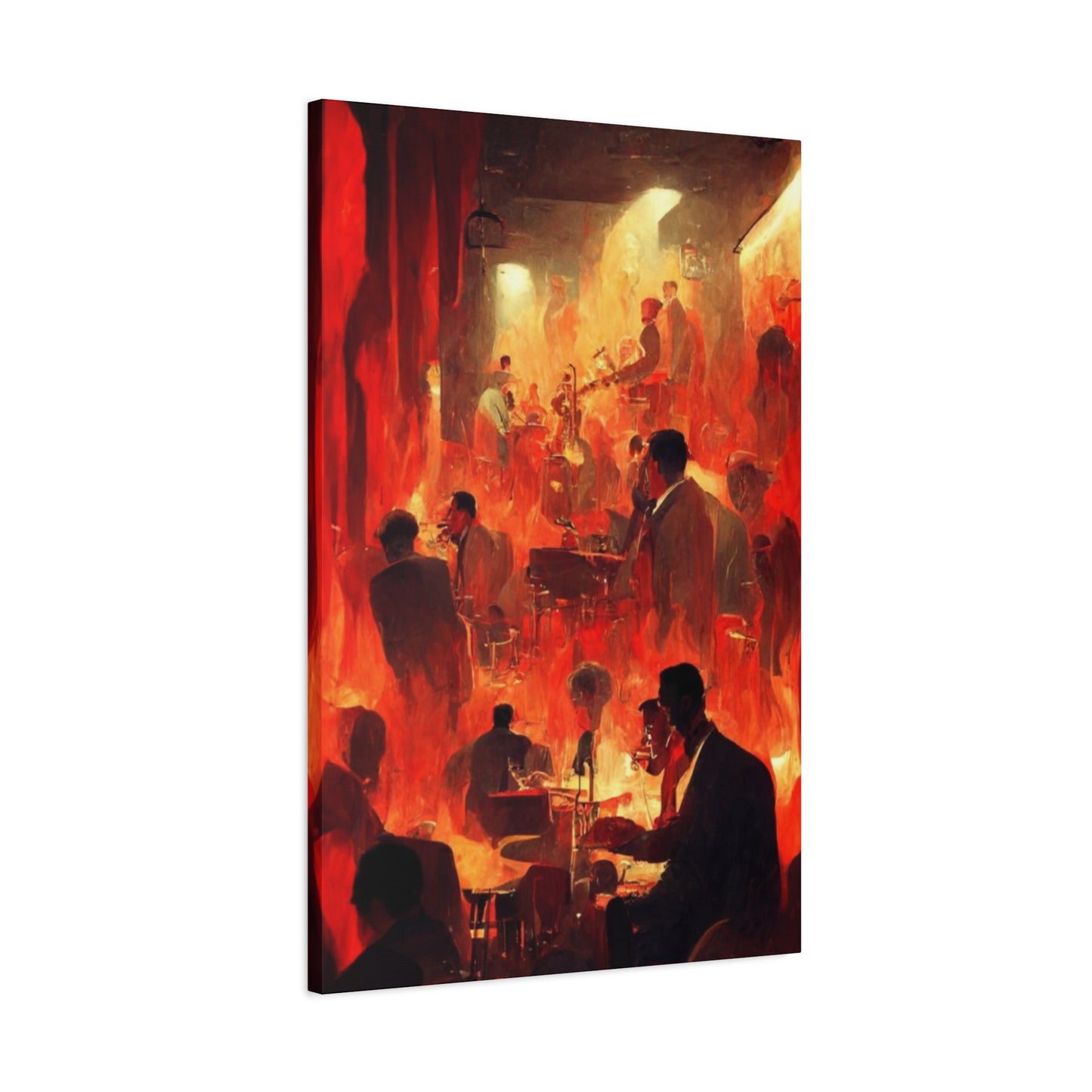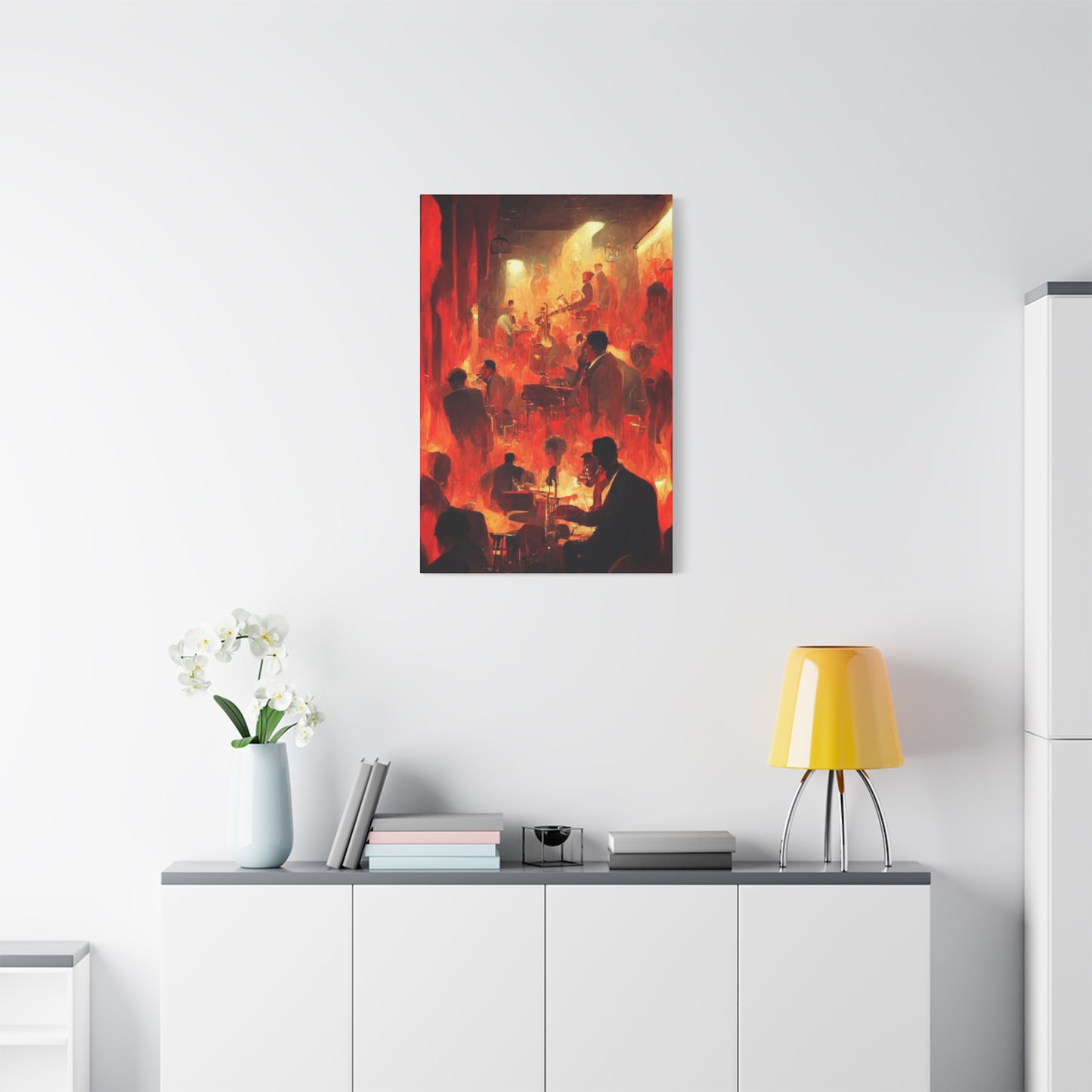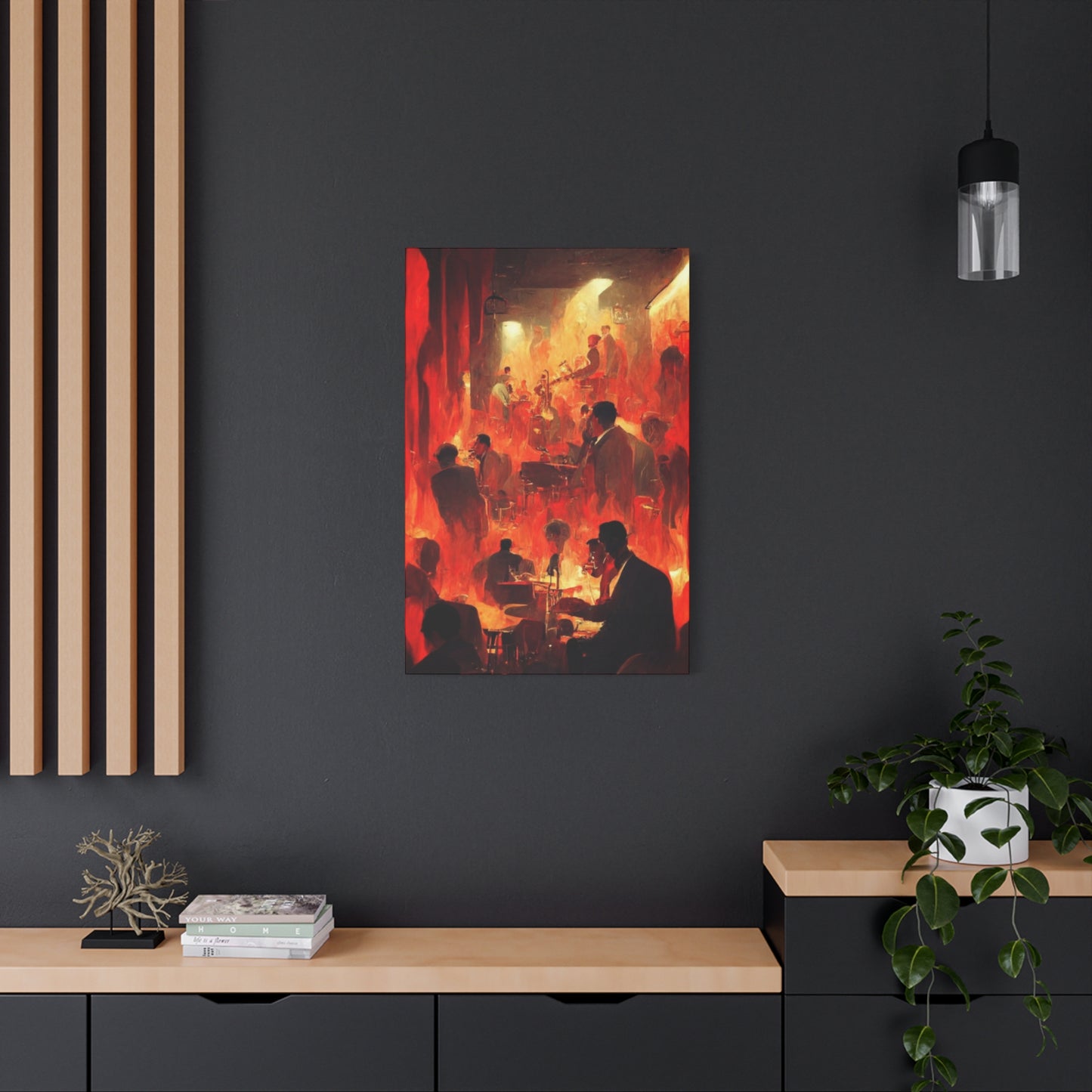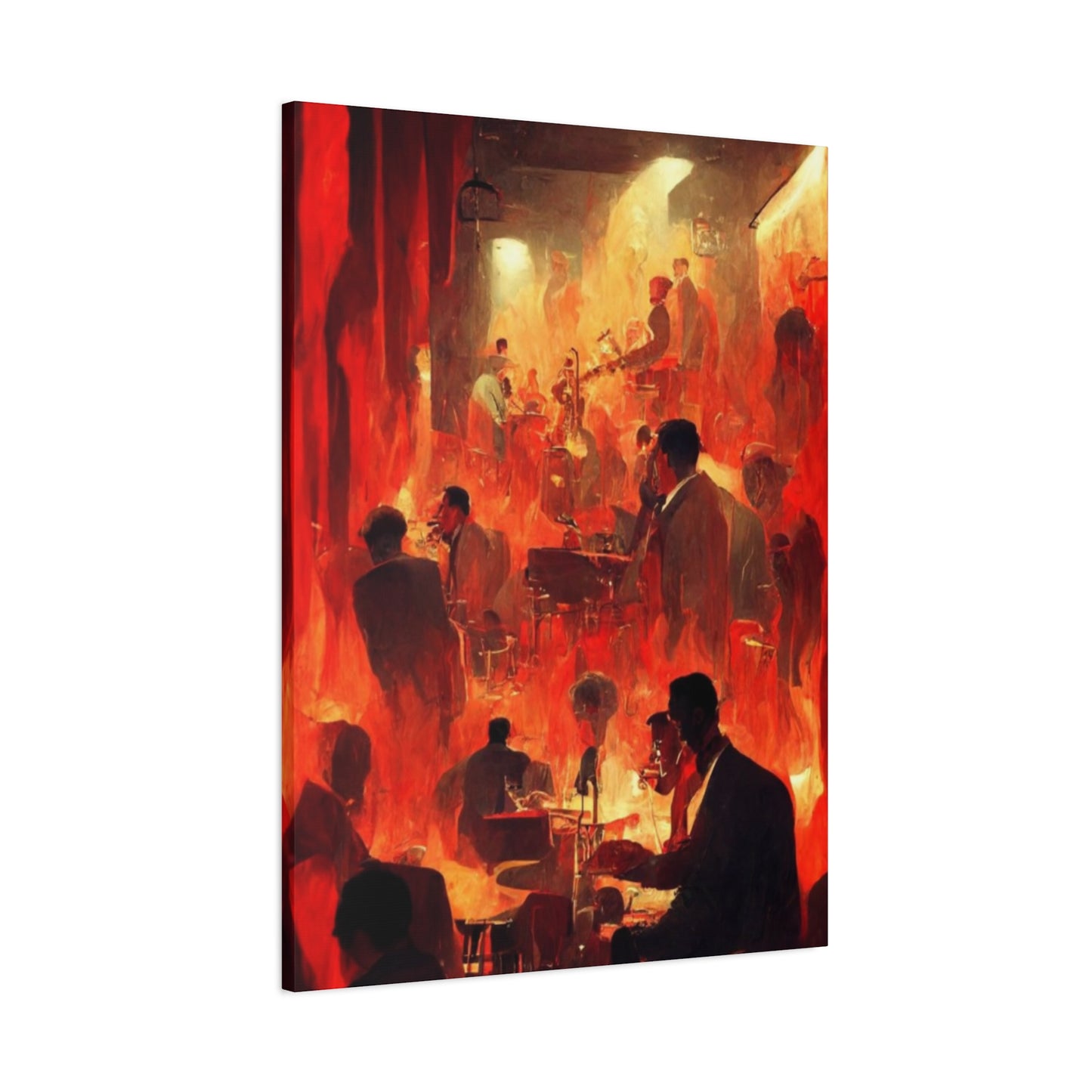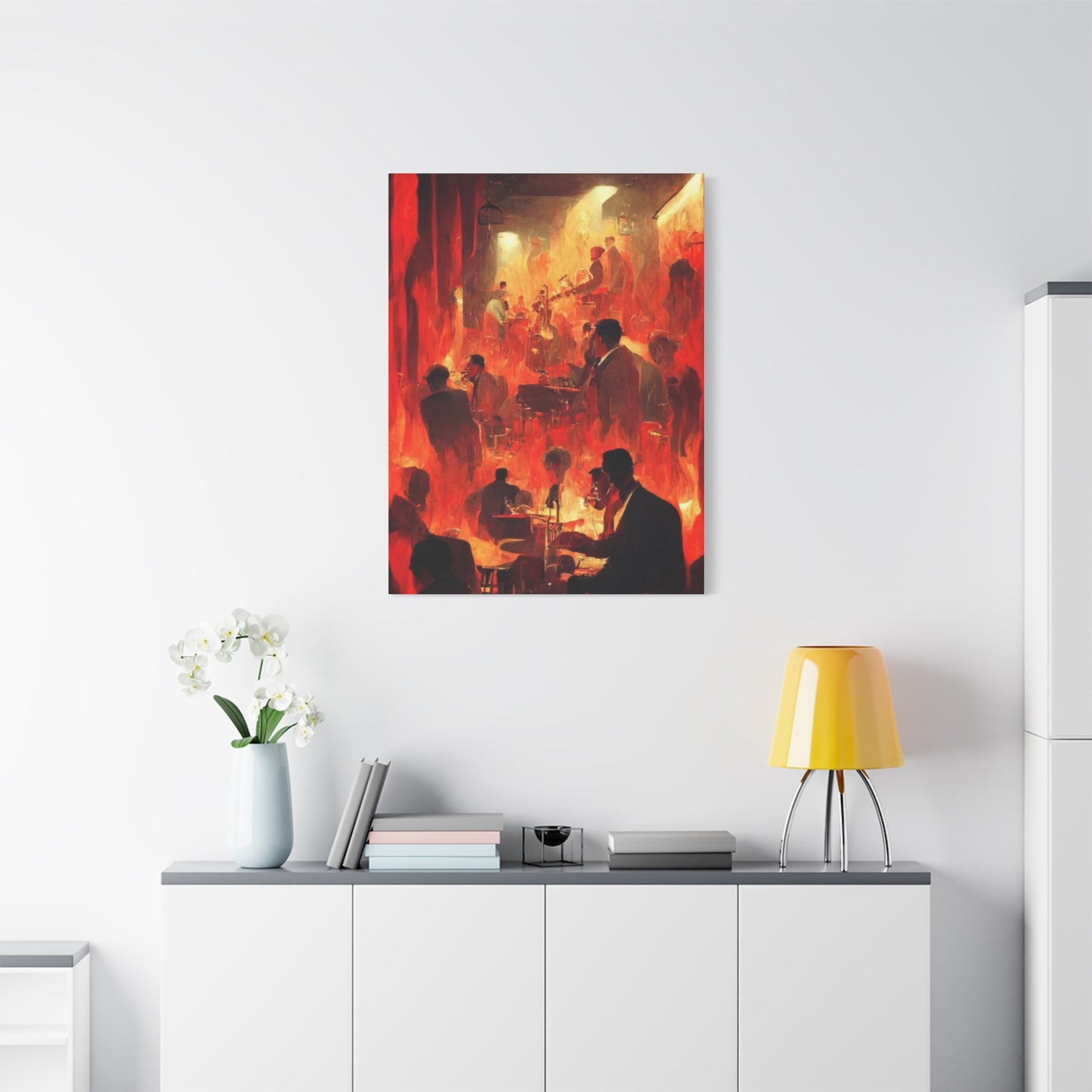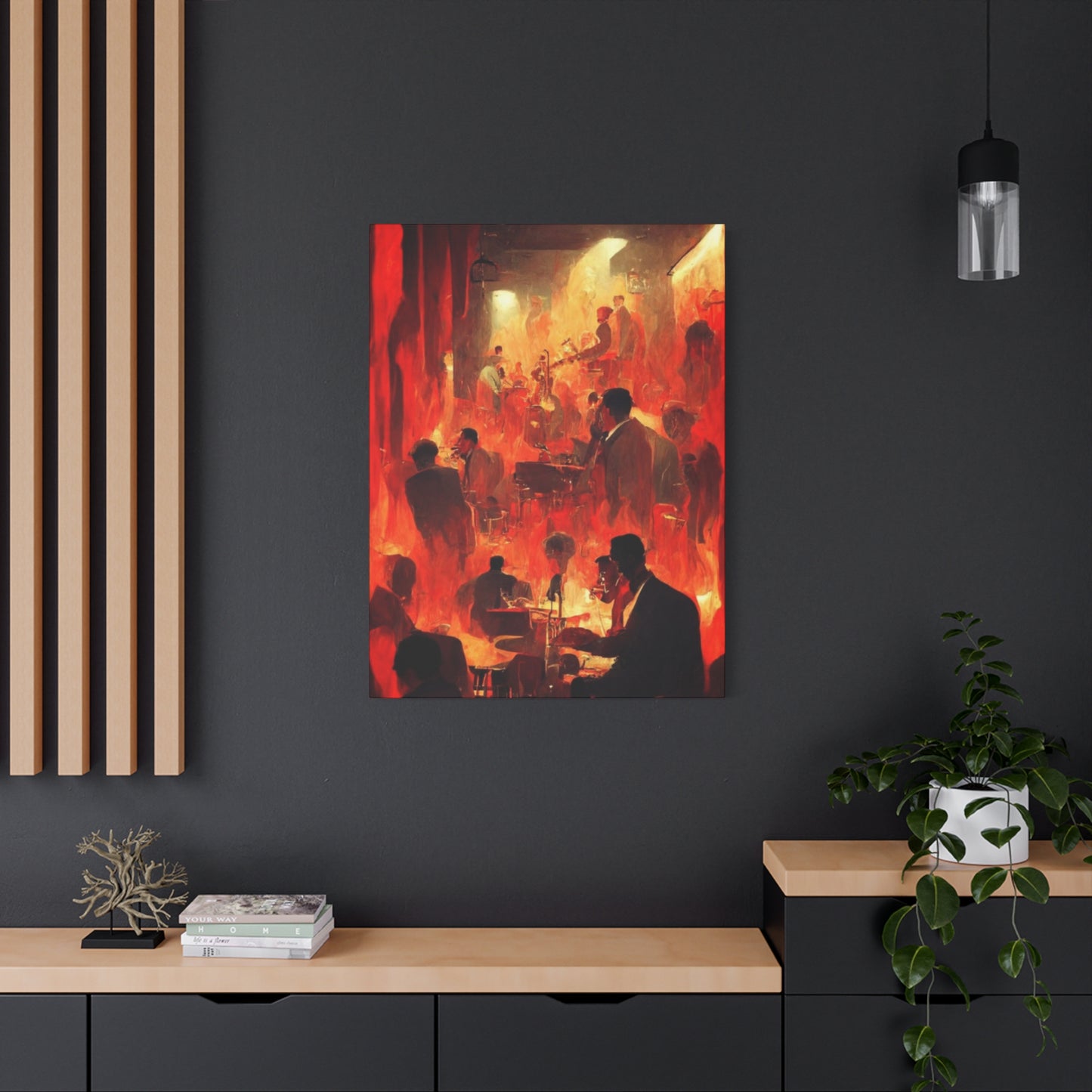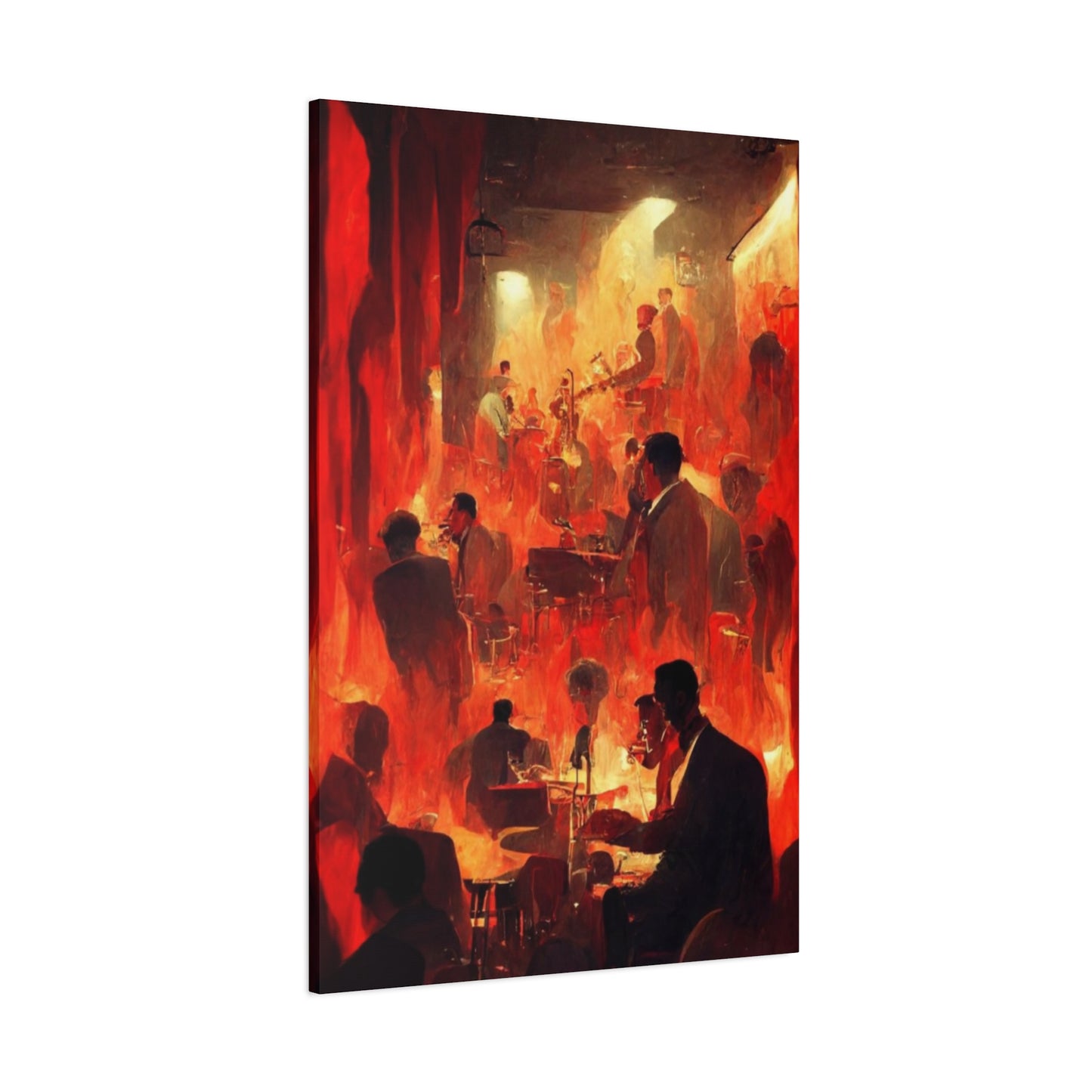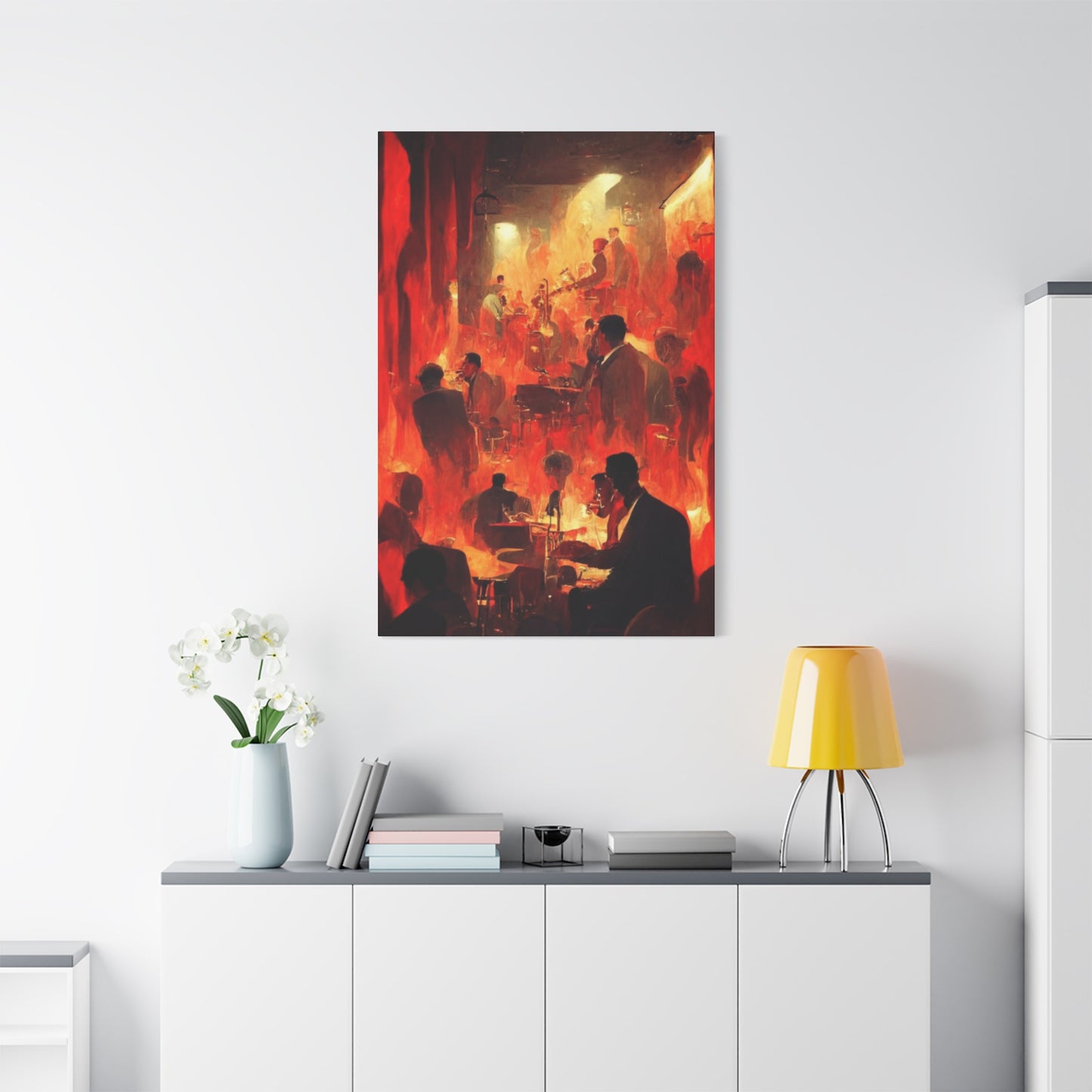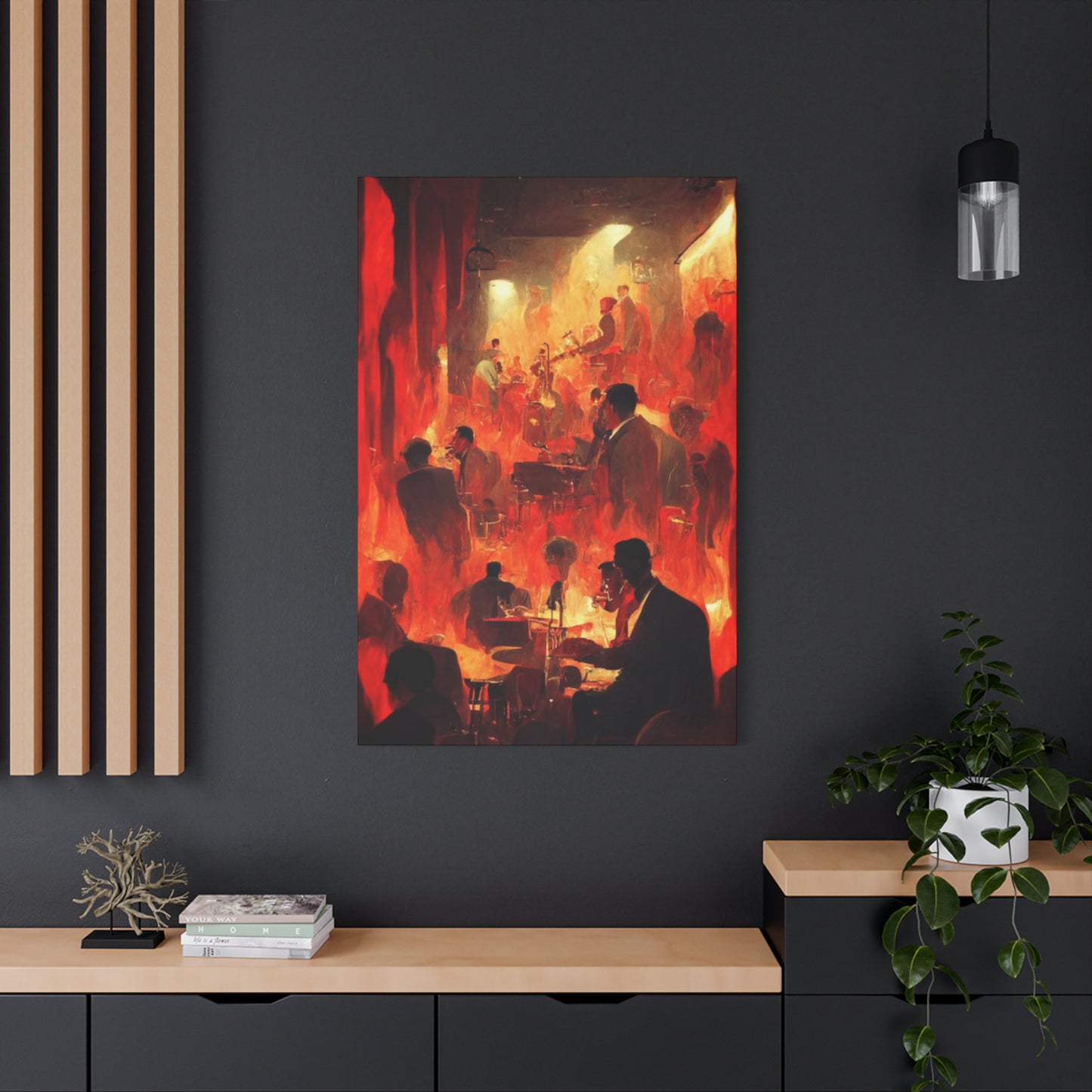Saxophone Wall Art: Creating Musical Ambiance Through Jazz-Inspired Home Decor
Music has always been a powerful force in shaping our emotions and creating atmosphere within our living spaces. Among all musical instruments, the saxophone holds a special place in the hearts of music lovers and interior design enthusiasts alike. This brass woodwind instrument, with its sultry tones and elegant curves, has become synonymous with jazz culture and sophisticated musical expression. When translated into wall art, saxophone imagery brings a unique combination of artistic beauty and musical nostalgia that can transform any room into a haven of creative inspiration.
The appeal of saxophone wall art extends far beyond mere decoration. It represents a lifestyle, a passion for music, and an appreciation for the rich cultural heritage of jazz. Whether you're a professional musician, a jazz enthusiast, or simply someone who appreciates the aesthetic beauty of musical instruments, incorporating saxophone-themed artwork into your home decor can create an atmosphere that resonates with rhythm, soul, and artistic sophistication.
In today's interior design landscape, music-themed wall art has gained tremendous popularity as homeowners seek to personalize their spaces with meaningful and visually striking elements. Saxophone wall art, in particular, offers versatility that few other decorative themes can match. From sleek modern interpretations to vintage-inspired pieces, from abstract representations to photorealistic portraits of jazz legends, the possibilities are endless.
This comprehensive exploration delves into the multifaceted world of saxophone wall art, examining various styles, applications, and creative approaches that can enhance your living space while celebrating the timeless appeal of jazz music. We'll journey through different artistic interpretations, practical placement strategies, and the emotional impact that well-chosen musical artwork can have on your daily environment.
Jazz Night Wall Art Ideas
Creating the perfect jazz night atmosphere in your home requires careful consideration of artistic elements that capture the essence of intimate musical performances. Jazz night wall art serves as a visual soundtrack, setting the mood for relaxation, contemplation, and musical appreciation. The dimly lit club atmosphere, with its smoky ambiance and passionate performances, provides endless inspiration for artistic interpretation.
When selecting jazz night wall art, consider pieces that evoke the sensory experience of live jazz performances. Artwork featuring dimly lit stages, silhouetted musicians, and atmospheric lighting can transport viewers to legendary jazz venues like the Blue Note or Village Vanguard. These pieces often incorporate warm color palettes dominated by deep blues, rich golds, and smoky grays that mirror the intimate lighting found in traditional jazz clubs.
The emotional resonance of jazz night artwork lies in its ability to capture fleeting moments of musical magic. Artists often focus on the interplay between light and shadow, creating compositions that suggest movement and rhythm even in static images. Saxophone players caught mid-performance, with light streaming across their instruments, create powerful focal points that draw viewers into the musical narrative.
Contemporary artists have developed innovative approaches to jazz night themes, incorporating mixed media techniques that blend photography, painting, and digital manipulation. These hybrid artworks can include textural elements that mimic the tactile experience of vintage album covers or the worn surfaces of beloved musical instruments. Some pieces incorporate actual sheet music or lyrics as background elements, adding layers of meaning and authenticity to the overall composition.
The psychological impact of jazz night wall art extends beyond mere decoration. These pieces can transform a mundane living space into a sophisticated retreat that encourages reflection and creative thinking. The visual rhythm created by well-composed jazz scenes can actually influence the pace and mood of daily activities, creating a more harmonious living environment.
For homeowners seeking to create dedicated music rooms or entertainment spaces, jazz night wall art provides the perfect foundation for thematic decorating. These pieces work exceptionally well when combined with appropriate lighting, comfortable seating, and complementary accessories like vintage instruments or record collections. The key is maintaining consistency in mood and style while allowing individual pieces to contribute to an overall narrative of musical passion and sophistication.
Saxophone in Motion Canvas Prints
The dynamic nature of saxophone performance lends itself beautifully to canvas print reproduction, where the instrument's fluid lines and the musician's expressive movements can be captured with stunning visual impact. Saxophone in motion artwork celebrates the kinetic energy of jazz performance, freezing moments of musical passion in time while suggesting the continuous flow of melody and rhythm.
Canvas prints offer unique advantages for displaying saxophone motion artwork. The texture of canvas adds depth and authenticity to these images, creating a tactile quality that enhances the viewer's connection to the musical subject matter. High-quality canvas prints can reproduce the subtle gradations of light and shadow that are essential to conveying movement and emotion in saxophone photography and illustrations.
Artists working with saxophone motion themes often employ techniques that blur the boundaries between photography and painting. Long exposure photography can capture the graceful arcs of saxophone movement, creating ethereal trails of light and motion that transform the instrument into a visual melody. These techniques produce images that pulse with energy and seem to vibrate with unheard music.
The compositional elements of successful saxophone motion artwork typically focus on gesture and flow. Musicians captured mid-performance, with their bodies swaying to internal rhythms, create compelling visual narratives that speak to the physical nature of musical expression. The saxophone itself becomes a extension of the performer's body, its curves echoing human form while its metallic surface catches and reflects stage lighting in dynamic patterns.
Color plays a crucial role in saxophone motion canvas prints. Warm tones suggest the golden brass of the instrument, while cool blues and purples can evoke the smoky atmosphere of late-night performances. Artists often use selective color techniques, highlighting the saxophone in warm metallics while rendering backgrounds in monochromatic tones, creating visual focus that draws the eye directly to the musical action.
Modern printing technology allows for remarkable detail reproduction in saxophone motion canvas prints. Fine gradations in metallic surfaces, subtle reflections in the instrument's lacquered finish, and the intricate mechanical details of keys and valves can all be preserved with stunning clarity. This technical precision enhances the artwork's ability to capture not just the visual appearance of saxophones, but their essential character as precision musical instruments.
The placement of saxophone motion canvas prints requires consideration of viewing angles and lighting conditions. These dynamic images often work best where they can be appreciated from multiple perspectives, allowing viewers to discover new details and interpretations as they move through the space. Proper lighting can enhance the sense of motion and bring out the metallic qualities that make saxophone imagery so visually compelling.
Musical Vibes for Home Decor
Integrating musical themes into home decor requires a delicate balance between artistic expression and practical functionality. Musical vibes in interior design go beyond simply hanging pictures of instruments on walls; they involve creating cohesive environments that reflect the homeowner's passion for music while maintaining aesthetic harmony throughout the living space.
The concept of musical vibes encompasses various design elements that work together to create atmospheres reminiscent of different musical genres and eras. For saxophone and jazz-themed decor, this might include vintage-inspired color schemes, textures that evoke the tactile experience of musical instruments, and lighting that mimics the intimate ambiance of jazz clubs. These elements combine to create spaces that feel alive with musical energy.
Successful musical home decor often incorporates authentic elements alongside artistic representations. Vintage album covers, actual instruments used as decorative objects, and period-appropriate furniture can complement saxophone wall art to create immersive musical environments. The key is avoiding the creation of theme park-like spaces in favor of sophisticated integration that feels natural and lived-in.
Color psychology plays a significant role in creating musical vibes through home decor. Jazz-inspired spaces often benefit from warm, earthy tones that evoke the rich timbres of brass instruments and the cozy atmosphere of intimate performance venues. Deep blues and purples can suggest the emotional depth of jazz music, while gold and bronze accents mirror the metallic surfaces of saxophones and other brass instruments.
Texture becomes particularly important when creating musical vibes in interior spaces. Rough, weathered surfaces can evoke the authentic character of vintage music venues, while smooth, polished elements might reflect the precision and craftsmanship of fine musical instruments. Fabric choices, furniture materials, and even flooring can contribute to the overall sensory experience of musically-themed spaces.
Lighting design is crucial for establishing proper musical vibes in home decor. Soft, warm lighting can create the intimate atmosphere associated with jazz performance, while strategic accent lighting can highlight specific pieces of saxophone wall art or musical memorabilia. Dimmer controls allow homeowners to adjust lighting levels to match different moods and activities, from energetic entertaining to quiet contemplation.
The psychological benefits of musical home decor extend beyond aesthetic pleasure. Living spaces that reflect personal passions and interests can improve mood, reduce stress, and increase overall satisfaction with the home environment. For music lovers, surrounding themselves with visual reminders of their musical interests can provide daily inspiration and emotional support.
Iconic Jazz Moments on Wall Art
The history of jazz is filled with legendary performances and unforgettable moments that have shaped not only music but culture itself. Capturing these iconic jazz moments in wall art creates powerful connections between viewers and the rich heritage of American musical innovation. These artistic interpretations serve as visual time capsules, preserving the energy and significance of pivotal musical events for future generations.
Iconic jazz moments encompass a wide range of subjects, from famous recording sessions to legendary live performances. Artists have found inspiration in the spontaneous magic of jazz improvisation, the collaborative spirit of musical ensembles, and the individual brilliance of jazz innovators. Saxophone players, given their prominent role in jazz history, feature heavily in artwork depicting these memorable musical moments.
The artistic challenge of representing iconic jazz moments lies in translating auditory experiences into visual narratives. Artists must convey not only the physical appearance of musicians and their instruments but also the emotional intensity and cultural significance of specific performances. This often requires combining realistic portraiture with more abstract elements that suggest music, movement, and atmosphere.
Historical accuracy becomes important when creating artwork based on iconic jazz moments. Artists often research period details, from clothing styles and instrument designs to venue architecture and lighting conditions. This attention to historical detail helps viewers connect more deeply with the depicted moments while educating them about jazz history and culture.
The emotional impact of iconic jazz moment artwork stems from its ability to evoke nostalgia and reverence for musical achievement. These pieces often become conversation starters, encouraging viewers to explore jazz history and discover new artists and recordings. They serve as bridges between past and present, connecting contemporary music lovers with the pioneers who established jazz as a sophisticated art form.
Contemporary artists have developed various approaches to depicting iconic jazz moments, from photorealistic paintings to stylized illustrations and mixed media compositions. Some focus on capturing specific historical events, while others create composite images that blend elements from multiple performances or eras. The diversity of artistic approaches reflects the multifaceted nature of jazz itself.
Digital technology has opened new possibilities for creating and reproducing iconic jazz moment artwork. High-resolution printing allows for remarkable detail preservation, while digital manipulation techniques can enhance historical photographs or combine multiple source images into cohesive artistic compositions. These technological advances have made high-quality jazz moment artwork more accessible to collectors and enthusiasts.
Abstract Saxophone Artwork
Abstract artistic interpretations of saxophones offer unique opportunities to explore the instrument's essential character beyond literal representation. These pieces focus on capturing the emotional and spiritual essence of saxophone music rather than simply depicting the instrument's physical appearance. Abstract saxophone artwork can convey the fluid, improvisational nature of jazz while creating visually striking compositions that work well in contemporary interior design schemes.
The abstract approach to saxophone artwork often emphasizes the instrument's distinctive curves and angles, transforming them into dynamic compositional elements. Artists might deconstruct the saxophone's form, isolating specific shapes and patterns that suggest musical movement or emotional expression. These simplified forms can create powerful visual impact while maintaining clear connections to their musical inspiration.
Color takes on heightened importance in abstract saxophone artwork, where artists are freed from the constraints of realistic representation. Bold color choices can evoke specific emotions or musical moods, from the cool blues of melancholy ballads to the hot reds and oranges of energetic swing numbers. Some artists use color temperature contrasts to create visual tension that mirrors the emotional complexity of jazz improvisation.
Gestural techniques in abstract saxophone art can suggest the physical movements involved in playing the instrument. Broad brushstrokes might echo the sweeping gestures of performance, while delicate details could represent the precise finger work required for complex musical passages. These technical approaches create visual rhythms that parallel musical rhythms, establishing connections between artistic and musical expression.
Mixed media approaches in abstract saxophone artwork allow artists to incorporate diverse materials and textures that enhance the sensory experience of viewing these pieces. Sheet music fragments, metallic elements that suggest instrument surfaces, and textural additives that create tactile interest can all contribute to more complex and engaging artistic compositions. These techniques create layers of meaning that reward careful observation.
The interpretation of abstract saxophone artwork becomes a collaborative process between artist and viewer. Without literal representation to guide understanding, viewers must bring their own musical experiences and emotional responses to complete the artistic communication. This participatory aspect makes abstract saxophone art particularly engaging for music lovers who can find personal connections within non-representational compositions.
Contemporary abstract saxophone artwork often incorporates digital techniques that would have been impossible for earlier generations of artists. Computer-generated patterns, digital color manipulation, and hybrid analog-digital processes create new possibilities for artistic expression. These technological approaches can produce effects that mirror the electronic processing and synthesis techniques used in contemporary jazz and fusion music.
Sax and Soul Artistic Wall Prints
The connection between saxophone music and soulful expression runs deep in American musical culture, spanning genres from jazz and blues to R&B and contemporary smooth jazz. Artistic wall prints that explore this sax and soul theme tap into powerful emotional resonances while creating visual representations of the instrument's ability to convey human feeling through musical sound.
Sax and soul artwork often emphasizes the intimate, personal nature of saxophone expression. Unlike some instruments that excel in ensemble settings, the saxophone's voice-like quality makes it particularly effective for solo expression and emotional communication. Artists capturing this quality might focus on close-up views of musicians in contemplative moments, highlighting the personal connection between performer and instrument.
The visual vocabulary of sax and soul artwork typically includes warm, earthy colors that evoke emotional depth and authenticity. Rich browns, deep golds, and muted oranges can suggest the warmth of human connection and the golden tones of brass instruments. These color choices create psychological associations with comfort, intimacy, and genuine emotion.
Portraiture plays a significant role in sax and soul artistic prints, as artists seek to capture the human element that gives saxophone music its emotional power. These portraits might focus on facial expressions during performance, hands positioned on instrument keys, or full-body compositions that show musicians fully engaged with their art. The goal is conveying the personal investment and emotional vulnerability required for soulful musical expression.
Cultural context becomes important in sax and soul artwork, as the instrument's soulful applications have strong connections to African American musical traditions. Artists creating works in this category often incorporate visual elements that acknowledge these cultural roots while celebrating the universal appeal of emotionally expressive music. This might include references to gospel traditions, blues heritage, or the urban environments where much soul music originated.
The technical aspects of reproducing sax and soul artwork as wall prints require careful attention to tonal subtleties and emotional nuance. High-quality printing processes must preserve the subtle gradations that convey mood and feeling, particularly in the treatment of human skin tones and the metallic surfaces of instruments. Print quality can significantly impact the emotional effectiveness of these intimate artistic statements.
Contemporary sax and soul artwork often blends traditional artistic techniques with modern aesthetic sensibilities. Artists might use classical composition principles while incorporating contemporary color palettes or graphic design elements. This fusion approach creates artwork that honors musical traditions while appealing to contemporary decorative preferences.
Vintage Jazz Posters on Canvas
The golden age of jazz produced a rich legacy of promotional materials, including posters that announced performances, celebrated recordings, and promoted jazz artists to broader audiences. Contemporary reproductions of vintage jazz posters on canvas offer unique opportunities to bring authentic historical flavor to modern interior spaces while honoring the graphic design traditions associated with jazz promotion.
Vintage jazz poster designs typically reflect the artistic styles and cultural attitudes of their respective eras. Art Deco influences from the 1920s and 1930s created bold, geometric compositions with strong typographic elements. Mid-century modern design principles influenced jazz promotion in the 1950s and 1960s, resulting in cleaner, more minimalist approaches that emphasized photography and innovative color combinations.
The appeal of vintage jazz poster artwork lies partly in its authentic historical character. These designs were created by commercial artists who understood their audiences and knew how to communicate the excitement and sophistication of jazz performance. Their work provides insight into how jazz was marketed and perceived during different periods of its development.
Canvas reproduction of vintage jazz posters requires careful attention to historical accuracy and print quality. The texture and appearance of canvas can enhance the vintage character of these designs while providing durability and visual impact. High-quality reproduction processes must preserve original color relationships and typographic details while adapting designs for contemporary display requirements.
Authentication becomes an important consideration when selecting vintage jazz poster reproductions. Original posters are often valuable collectibles with significant monetary worth, making accurate reproductions a more practical choice for most homeowners. Quality reproductions should clearly identify themselves as such while maintaining the visual impact and historical significance of original designs.
The decorative applications of vintage jazz poster canvas prints extend beyond music rooms and entertainment spaces. These designs can work effectively in kitchens, home offices, and bedroom spaces where their bold graphics and historical character can provide visual interest without overwhelming the overall decor scheme. Their graphic strength makes them particularly effective as focal points in minimalist interior designs.
Contemporary artists have begun creating new works inspired by vintage jazz poster aesthetics, combining historical design principles with modern subject matter and production techniques. These neo-vintage approaches allow for creative interpretation while maintaining the visual impact and cultural associations that make original vintage posters so appealing to jazz enthusiasts and design-conscious homeowners.
Saxophone Silhouettes for Interiors
Silhouette imagery offers a particularly elegant approach to incorporating saxophone themes into interior design schemes. By reducing complex forms to simple, recognizable shapes, saxophone silhouettes create strong visual impact while maintaining design flexibility that allows them to work effectively in various decorative contexts. These simplified representations capture the essential character of the instrument while avoiding the visual complexity that might compete with other design elements.
The power of saxophone silhouettes lies in their ability to suggest music and sophistication through minimal visual means. A well-designed silhouette can instantly communicate the presence of musical themes without requiring detailed rendering or complex color schemes. This economy of visual elements makes silhouette artwork particularly valuable in contemporary interior design, where clean lines and uncluttered compositions are highly valued.
Saxophone silhouettes work effectively at various scales, from small accent pieces to large statement walls. Small silhouette prints can provide subtle musical references in spaces where more elaborate artwork might be overwhelming, while large silhouette installations can create dramatic focal points that establish musical themes for entire rooms. This scalability makes silhouette artwork versatile for different spatial requirements and design objectives.
The graphic nature of saxophone silhouettes allows for creative applications beyond traditional framed artwork. These designs can be adapted for wall decals, stenciled applications, and even architectural elements like room dividers or decorative screens. The simplicity of silhouette forms makes them suitable for various materials and production techniques, expanding their potential applications in interior design.
Color choices for saxophone silhouettes can dramatically affect their visual impact and decorative effectiveness. Black silhouettes against light backgrounds create classic, high-contrast compositions that work well in modern and traditional settings. Colored silhouettes can provide subtle accent colors that complement existing decor schemes, while metallic treatments can echo the brass character of actual saxophones.
The psychological impact of saxophone silhouettes differs from more detailed representations. These simplified forms allow viewers to project their own musical associations and memories onto the artwork, creating personal connections that might be more difficult to achieve with highly specific representations. This interpretive flexibility makes silhouette artwork appealing to diverse audiences with varying musical backgrounds.
Contemporary production techniques allow for precise reproduction of saxophone silhouettes across various media and scales. Laser cutting technology can create dimensional silhouette installations, while digital printing enables accurate reproduction of designed silhouette compositions. These technical capabilities expand creative possibilities while ensuring consistent quality in finished artwork.
Cool Jazz Wall Decor for Music Lovers
Cool jazz, with its sophisticated harmonies and relaxed tempos, represents a particular aesthetic within the broader jazz tradition that translates beautifully into interior design themes. Wall decor inspired by cool jazz emphasizes subtlety, refinement, and understated elegance rather than the more energetic expressions associated with other jazz styles. This approach creates sophisticated environments that appeal to discerning music lovers and design enthusiasts.
The visual characteristics of cool jazz wall decor often mirror the musical qualities of the genre itself. Muted color palettes dominated by cool blues, grays, and whites create calming atmospheres that encourage contemplation and relaxation. These subdued tones provide excellent backgrounds for saxophone imagery while maintaining the sophisticated restraint associated with cool jazz performance.
Cool jazz wall decor typically features clean, uncluttered compositions that emphasize space and proportion rather than busy detail. Artists working in this style often employ negative space effectively, allowing individual elements to breathe and creating visual rhythms that parallel the laid-back pacing of cool jazz music. This minimalist approach works particularly well in contemporary interior settings.
The subject matter of cool jazz wall decor often focuses on intimate performance settings and contemplative musical moments. Rather than energetic stage performances, these pieces might depict musicians in recording studios, late-night practice sessions, or quiet club performances. The emphasis is on the introspective, intellectual aspects of jazz rather than its more extroverted expressions.
Photographic approaches to cool jazz wall decor frequently employ techniques that emphasize mood and atmosphere over sharp detail. Soft focus, subtle lighting, and carefully controlled contrast create dreamy, ethereal effects that complement the sophisticated simplicity of cool jazz music. Black and white photography can be particularly effective for creating the timeless, classic atmosphere associated with cool jazz.
The integration of cool jazz wall decor into interior spaces requires attention to overall ambiance and lifestyle considerations. These pieces work best in environments that support quiet contemplation and sophisticated entertaining. Living rooms, studies, bedrooms, and intimate dining areas can all benefit from the calming influence of well-chosen cool jazz artwork.
Contemporary cool jazz wall decor often incorporates modern production techniques while maintaining classical aesthetic principles. High-quality printing processes can preserve subtle tonal gradations that are essential to the cool jazz aesthetic, while contemporary mounting and framing options can integrate these pieces seamlessly into modern interior design schemes.
Live Jazz Inspired Wall Art
The energy and spontaneity of live jazz performance provide rich inspiration for wall art that captures the immediate, unrepeatable magic of musical improvisation. Live jazz inspired artwork seeks to preserve the dynamic interaction between musicians and audiences, the electricity of spontaneous musical creation, and the communal experience that makes jazz performance so compelling for both participants and listeners.
Live jazz wall art often emphasizes movement and energy through compositional techniques that suggest rhythm and improvisation. Dynamic angles, flowing lines, and energetic brushwork can create visual equivalents to the spontaneous musical interplay that characterizes great jazz performance. These techniques help viewers feel the excitement and unpredictability that make live jazz so engaging.
The challenge of representing live jazz in static visual media requires artists to find ways to suggest temporal progression and musical development. Sequential imagery, multiple exposure techniques, and compositional elements that imply movement through space can all contribute to creating artwork that feels alive with musical energy. The goal is capturing the essence of performance rather than simply documenting its appearance.
Audience participation becomes an important element in many live jazz inspired artworks. The relationship between performers and listeners is fundamental to the jazz experience, and visual representations often include suggestions of audience engagement, whether through visible listeners, atmospheric elements that suggest crowded venues, or compositional techniques that invite viewer participation.
The lighting conditions typical of jazz venues provide important atmospheric elements for live jazz inspired wall art. Dramatic stage lighting, intimate venue ambiance, and the interplay between light and shadow all contribute to creating the visual atmosphere associated with live jazz performance. Artists often use these lighting effects as compositional elements that enhance the overall impact of their work.
Contemporary live jazz wall art frequently incorporates mixed media techniques that layer different artistic approaches to create complex, engaging compositions. Photographic elements might be combined with painted details, digital manipulation, and textural additions to create artwork that feels as multifaceted and complex as live jazz performance itself.
The emotional resonance of live jazz inspired wall art comes from its ability to evoke memories and associations related to personal musical experiences. For viewers who have attended jazz performances, these pieces can trigger recollections of specific concerts or venues. For those less familiar with live jazz, the artwork can provide an introduction to the excitement and sophistication of jazz performance culture.
Saxophone Spotlight in Art
The saxophone's distinctive visual and acoustic characteristics make it a natural subject for artistic spotlight treatment, where the instrument becomes the central focus of compositional attention. Saxophone spotlight artwork emphasizes the instrument's elegant curves, complex mechanical details, and reflective surfaces while exploring its role as both functional tool and aesthetic object.
Spotlight treatment in saxophone art often employs dramatic lighting techniques that highlight the instrument's three-dimensional form and metallic surfaces. Carefully controlled illumination can emphasize the saxophone's sculptural qualities while creating dynamic patterns of light and shadow that suggest movement and musical activity. These lighting effects become integral parts of the artistic composition rather than merely technical considerations.
The mechanical complexity of saxophones provides rich subject matter for detailed artistic exploration. Keys, springs, tone holes, and other functional elements create intricate patterns that can be emphasized through spotlight treatment. Artists might focus on specific details, using close-up perspectives and dramatic lighting to transform utilitarian components into objects of aesthetic contemplation.
Saxophone spotlight artwork often explores the relationship between form and function in musical instruments. The saxophone's curves and angles serve specific acoustic purposes, but they also create visually pleasing proportions that appeal to aesthetic sensibilities. Artists can emphasize this dual nature through compositional techniques that highlight both functional and decorative aspects of instrument design.
The reflective properties of saxophone surfaces create opportunities for creative lighting effects in spotlight artwork. Polished brass can mirror surrounding environments, create interesting distortions, and produce complex patterns of reflected light. Artists working with saxophone subjects often incorporate these reflective qualities as active elements in their compositions rather than simply recording them as surface details.
Color temperature becomes particularly important in saxophone spotlight artwork, where the warmth of brass tones must be balanced against other compositional elements. Warm lighting can emphasize the golden character of brass instruments, while cooler lighting might create interesting contrasts or suggest different emotional moods. The interplay between warm and cool color temperatures can create dynamic visual tension that enhances overall impact.
Contemporary saxophone spotlight artwork benefits from advanced photographic and digital techniques that allow for precise control over lighting effects and surface rendering. High dynamic range photography can capture both bright highlights and deep shadows within single compositions, while digital manipulation can enhance or modify lighting effects to achieve specific artistic goals.
Modern Jazz Canvas Ideas
Modern jazz has evolved far beyond its traditional boundaries, incorporating electronic elements, fusion influences, and contemporary production techniques that create new possibilities for visual artistic interpretation. Modern jazz canvas ideas must reflect this musical evolution while maintaining connections to jazz traditions and cultural heritage. These contemporary approaches to jazz-themed artwork offer fresh perspectives on familiar subjects while appealing to new generations of music lovers.
Modern jazz canvas artwork often incorporates digital design elements that parallel the electronic processing and synthesis techniques used in contemporary jazz production. Computer-generated patterns, digitally manipulated photography, and hybrid analog-digital compositions can create visual effects that mirror the technological sophistication of modern jazz recording and performance.
The color palettes used in modern jazz canvas artwork frequently depart from traditional warm brass tones in favor of more diverse and experimental color combinations. Electric blues, synthesized purples, and neon accents can suggest the electronic elements common in modern jazz while maintaining visual connections to musical themes. These contemporary color choices help distinguish modern jazz artwork from more traditional approaches.
Contemporary jazz fusion influences appear in modern jazz canvas ideas through compositional techniques that blend realistic and abstract elements. Just as fusion music combines jazz with rock, funk, and world music influences, fusion visual approaches might combine photographic elements with abstract backgrounds, realistic instrument depictions with stylized environmental treatments, or traditional artistic techniques with digital effects.
The subject matter of modern jazz canvas artwork often includes contemporary performance contexts that differ from traditional jazz venues. Studio environments, electronic equipment, and modern concert halls might replace intimate clubs and vintage venues in artistic compositions. These contemporary settings help connect jazz artwork to current musical practices and cultural contexts.
Mixed media approaches in modern jazz canvas artwork allow artists to incorporate diverse materials and techniques that reflect the eclectic nature of contemporary jazz. Traditional painting and drawing techniques might be combined with digital printing, photographic elements, textural additives, and even embedded electronic components to create multi-sensory artistic experiences.
The scale and format of modern jazz canvas artwork can depart from traditional rectangular compositions in favor of more experimental approaches. Irregular shapes, multi-panel installations, and dimensional elements can create more dynamic presentations that reflect the experimental nature of contemporary jazz. These innovative formats help modern jazz artwork stand out in contemporary interior design contexts.
Blue Notes Saxophone Art
The concept of blue notes in jazz music refers to specific pitch alterations that create the characteristic emotional expression associated with blues and jazz performance. Blue notes saxophone art explores this musical concept through visual interpretations that capture the melancholy, soulfulness, and emotional depth that blue notes contribute to musical expression. These artistic works create visual equivalents to the harmonic tensions and emotional releases that make blue notes so powerful in jazz performance.
Blue notes artwork typically emphasizes cool color palettes dominated by various shades of blue, from deep navy tones to bright electric blues. These color choices create immediate associations with both the musical concept and the emotional states that blue notes typically express. The monochromatic or limited color approaches can create unified compositions while allowing for subtle variations that suggest musical nuance.
The emotional character of blue notes finds visual expression through compositional techniques that suggest tension and resolution. Curved lines that bend away from expected paths, asymmetrical balances that create visual unease, and color transitions that move from dark to light can all serve as visual metaphors for the harmonic movement that characterizes blue note usage in jazz performance.
Textural treatments in blue notes saxophone art often emphasize rough, weathered surfaces that suggest the authentic, raw emotion associated with blues expression. Artists might use techniques that create aged appearances, worn textures, or distressed finishes that echo the lived experience and emotional honesty that blue notes represent in musical contexts.
The saxophone's particular effectiveness for blue note expression makes it an ideal subject for artwork exploring this musical concept. The instrument's ability to bend pitches through embouchure control and its voice-like expressive capabilities translate well into visual representations that emphasize flexibility, emotion, and personal expression.
Contemporary blue notes saxophone art often incorporates abstract elements that suggest the intangible, emotional aspects of musical expression that blue notes represent. Rather than focusing solely on literal instrument representation, artists might use color flows, gestural marks, or atmospheric effects to convey the feeling and mood that blue notes create in musical performance.
The therapeutic and emotional benefits of blue notes artwork extend beyond decoration to provide visual environments that support contemplation, emotional processing, and stress relief. The calming influence of blue tones combined with the sophisticated associations of jazz culture can create spaces that promote mental wellbeing and emotional balance.
Energetic Jazz Scenes on Canvas
Jazz music at its most energetic creates an atmosphere of excitement, spontaneity, and pure joy that translates powerfully into visual artistic expression. Energetic jazz scenes on canvas capture the exuberant side of jazz performance, featuring dynamic compositions that pulse with rhythm and movement while celebrating the celebratory aspects of jazz culture.
Energetic jazz scene artwork typically employs bold color combinations that suggest excitement and vitality. Bright reds, vibrant oranges, and electric yellows can create visual energy that parallels the upbeat tempos and complex rhythms of energetic jazz performance. These warm, active colors help viewers feel the excitement and enthusiasm that characterize great jazz performances.
Compositional movement becomes crucial in energetic jazz scene artwork, where static representations would fail to capture the essential character of the subject matter. Dynamic angles, flowing lines, and compositional elements that lead the eye through complex visual paths can create artwork that feels alive with musical energy. The goal is creating visual rhythm that parallels musical rhythm.
Multiple figure compositions often appear in energetic jazz scenes, reflecting the collaborative nature of jazz performance and the community aspects of jazz culture. Artists might depict entire ensembles in performance, audiences engaged with the music, or dancers responding to rhythmic energy. These multi-figure compositions create complex visual narratives that celebrate the social dimensions of jazz.
The technical challenges of representing energetic jazz scenes require artistic approaches that can suggest movement, sound, and temporal progression within static visual media. Motion blur effects, multiple exposure techniques, and compositional devices that imply continuation beyond the picture frame can all contribute to creating artwork that transcends its static limitations.
Contemporary energetic jazz scene artwork often benefits from digital techniques that can create effects impossible to achieve through traditional media alone. Digital composition tools can layer multiple exposures, create complex color interactions, and generate dynamic effects that enhance the sense of energy and movement essential to successful energetic jazz artwork.
The placement and lighting of energetic jazz scene canvas prints requires consideration of their dynamic visual properties. These pieces often work best in active spaces where their energy can be appreciated and where they won't overwhelm more peaceful activities. Proper lighting can enhance their dynamic qualities while ensuring that color relationships remain accurate and impactful.
Saxophone Rhythm Captured in Art
Rhythm forms the foundation of all jazz music, and capturing this essential element in visual artwork presents unique challenges and opportunities. Saxophone rhythm art focuses on translating the temporal, rhythmic aspects of music into visual compositions that suggest beat, pulse, and rhythmic complexity while maintaining aesthetic appeal and decorative functionality.
Visual rhythm in saxophone artwork often employs repetitive elements that create patterns analogous to musical rhythms. Repeated shapes, color sequences, or textural elements can establish visual beats that help viewers feel rhythmic pulse even in silent artwork. These repetitive elements must be varied enough to maintain visual interest while consistent enough to establish clear rhythmic patterns.
The physical gestures involved in saxophone performance provide rich source material for rhythm-focused artwork. The repetitive motions of finger work, the rhythmic patterns of breathing and embouchure control, and the body movements that accompany rhythmic playing can all be translated into visual elements that suggest musical rhythm and temporal progression.
Syncopation, a key element in jazz rhythm, can be represented visually through unexpected compositional elements, asymmetrical balances, and rhythmic patterns that emphasize off-beats and surprising accents. Artists might use color placement, shape positioning, or textural variations to create visual syncopation that parallels the rhythmic sophistication of jazz performance.
The layered complexity of jazz rhythm, where multiple rhythmic patterns interact simultaneously, finds visual expression in multi-layered compositions where different visual elements establish independent rhythmic patterns while contributing to unified overall effects. These complex visual compositions can suggest the sophisticated rhythmic interplay that characterizes advanced jazz performance.
Contemporary saxophone rhythm artwork often incorporates time-based elements through sequential imagery or progressive visual development across single compositions. These techniques help suggest temporal progression and rhythmic development while maintaining the static nature required for wall art applications. The challenge is creating artwork that implies time without requiring actual temporal progression.
Digital techniques offer new possibilities for creating saxophone rhythm artwork, including the ability to generate complex patterns, create precise repetitions, and develop mathematical relationships between visual elements that parallel the mathematical relationships underlying musical rhythm. These technical capabilities can enhance artistic accuracy while expanding creative possibilities.
Jazz Legends on Wall Prints
The pantheon of jazz legends includes musicians whose contributions to the art form transcend their individual performances to influence entire generations of artists and music lovers. Wall prints celebrating jazz legends serve multiple functions: they honor musical achievement, educate viewers about jazz history, and create visual connections to the cultural heritage that jazz represents in American and world music.
Jazz legend portraiture requires careful balance between artistic interpretation and historical accuracy. Artists must capture not only physical likenesses but also the essential character and musical personality that made specific musicians legendary. This often involves emphasizing certain features or expressions that suggest musical passion, creative intensity, or the unique stylistic contributions of individual artists.
The challenge of representing musical genius in visual media requires artists to find ways to suggest the intangible qualities that made certain musicians legendary. Compositional techniques that emphasize hands, facial expressions during performance, or environmental details that suggest specific eras or venues can help communicate the special character that distinguished great jazz musicians from their contemporaries.
Conclusion
Saxophone Wall Art captures the soulful essence of jazz, transforming interior spaces into vibrant hubs of musical ambiance and artistic expression. These artworks celebrate the elegance, rhythm, and emotion of the saxophone, offering more than just decoration—they tell a story, evoke mood, and bring the improvisational spirit of jazz into the home. Whether depicted through abstract forms, vivid colors, or realistic renderings, saxophone-themed wall art resonates with music lovers, artists, and interior design enthusiasts, adding depth and character to any room.
Incorporating saxophone wall art into interiors allows homeowners to create spaces that are both stylish and emotionally engaging. In living rooms or lounges, it serves as a focal point that sparks conversation and reflects personal taste. In studies, offices, or creative studios, it inspires creativity, focus, and a sense of flow reminiscent of musical improvisation. Even in bedrooms or entertainment areas, the calming yet expressive presence of a saxophone artwork can enhance relaxation while reinforcing a love for music and culture. The versatility of saxophone-themed pieces ensures they complement a wide range of interior styles, from contemporary and minimalist to vintage or eclectic, seamlessly integrating into diverse décor schemes.
The artistry behind saxophone wall art emphasizes movement, emotion, and musicality. Artists carefully consider color palettes, brushstrokes, and composition to evoke the fluidity and energy of a live jazz performance. The interplay of light and shadow, abstract patterns, and dynamic forms creates a sense of rhythm, making viewers feel the music visually. This attention to detail transforms the artwork from mere decoration into an immersive experience, connecting the audience with the passion, improvisation, and soulfulness inherent in jazz.
Ultimately, Saxophone Wall Art elevates interiors by merging the worlds of music and visual art. It brings the improvisational charm and expressive energy of jazz into everyday life, inspiring emotion, creativity, and aesthetic pleasure. By featuring this art in a home or professional space, individuals can celebrate musical heritage, showcase personal style, and create environments that are vibrant, inspiring, and culturally enriched—making it a timeless addition to any décor.

















